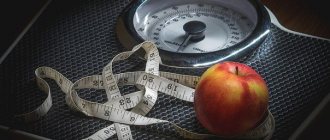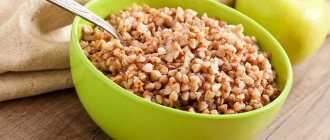Playing sports requires not only discipline and willpower, but also changes in approaches to nutrition. It often turns out that this is what separates a person from the desired results. By giving a stressful load, as part of training, we expect the body to adapt to new conditions and achieve progress. But to activate anabolic processes and recover between workouts, you need an appropriate amount of energy and essential nutrients.
You might think that the problem of a sufficient amount of nutrients is faced only by professional athletes, who need to consume about 5000 kcal per day; this energy norm is problematic to obtain from ordinary foods. But it also faces an ordinary person who regularly engages in one or another sport with the desire to improve results. The lifestyle forces many to lean towards 2 meals a day with chaotic snacks. Not everyone succeeds in eating only homemade food with a known recipe. Late dinner becomes an outlet after a working day and a full workout. The number of calories in this case may be excessive, but the composition of the food itself contradicts the needs of the body and calls into question the benefits of such training in the future.
Developers of sports nutrition come to the rescue, but a non-professional athlete should remember 3 main principles: timeliness, moderation and variety . If “sport pit” does not organically complement the entire nutrition system, but only compensates for shortcomings, you should not expect quick results.
Basic principles
Understanding the basic principles will give a greater effect than buying a magic gainer or another fat-burning supplement.
When purchasing a supplement, you must understand what problems it will help solve.
Power requirements must address the following:
- increasing general and special performance;
- acceleration of recovery, prevention of overstrain of the body after exercise;
- adaptation and normalization of biological rhythms when changing time zones;
- supporting immunity and preventing immunodeficiencies caused by training and competitions;
- body weight management (both in terms of increase and decrease);
- creation of optimal water regime and exchange of essential minerals.
Carbohydrates are a quick source of energy during exercise. At this time, glycogen stores decrease. They must be compensated from food, but at high costs this time can stretch up to 24 hours. With prolonged exercise, the sources of carbohydrates in the body change. First, the muscle reserves are used up, then the liver, and only then the body begins to break down proteins and fats.
During periods of high intensity, you need up to 700 g of carbohydrates per day with a weight of 70 kg in order to replenish reserves on time. The main products should be those that do not cause jumps in glycemia and take a long time to be absorbed. But since it is difficult to get the required amount from food, you can include 7% quickly digestible carbohydrates in the form of drinks, for example with maltodextrin. During the competition, drink 1 glass of 7% solution every 20 minutes. Strengthening carbohydrate reserves intensifies the joint intake with protein, about 5-9% of the carbohydrate content.
Squirrels . With moderate training (several hours a day) with 1-2 days of rest per week, it is recommended to eat up to one and a half grams per kilogram of weight per day. If the load increases beyond 3 hours a day, then the calculation is made based on two grams per kilogram of weight. Some athletes have a problem with a lack of protein in their diet, then the calculation is also made at 2g/kg, often running, boxing, wrestling, swimming, gymnastics, cycling.
The nutritional value and availability of protein is influenced by processing method and product source. Good sources of protein include fish, egg whites, chicken breast, skim milk, whey - all low-fat foods.
Fats can make up ⅓ of the daily diet. During high-intensity loads, their share can be increased to half. It is important to maintain the correct ratio of omega-3, 6 and saturated fatty acids.
During intense exercise, the proportion of fat in the diet can reach 50%.
This is what the International Society of Sports Nutrition draws the attention of athletes .
- It is necessary to calculate a schedule for replenishing energy reserves under loads of moderate and high intensity over a long period of time.
- Take fast-digesting carbohydrates with electrolytes in liquid form at ¼ hour intervals.
- Fast carbohydrates are quickly absorbed, but have a high glycemic index. Fructose can be a source of digestive problems.
- After training, it is recommended to take 0.2 g of protein for better glucose storage in the body.
- Use a protein-carbohydrate mixture (U 6-20 g) + (B 30-40 g) before exercise and for 3 hours after to improve anabolic processes.
- Everyday intake of protein-carbohydrate combinations with loads increases muscle strength, and also increases the percentage of muscle mass, while reducing fat mass.
- Increased effect when using creatine.
- An ambiguous reaction from the digestive system occurs to dairy products.
- The basic principle is that eating the right carbohydrates preserves muscles and increases their endurance. Controlling the fat in your diet helps regulate the rate of carbohydrate absorption during exercise.
- To restore glycogen reserves, the ratio of carbohydrates to proteins should be 3:1.
What sports nutrition to use when training at home
It is important to understand that sports nutrition for home workouts is a supplement, not a replacement for the main diet. This is not a magic remedy, but a good help for your body. Sports nutrition can also really help out in some situations when there is no time or opportunity to eat a full meal.
Sports supplements are also used by athletes in adulthood - after 40-50 years, when it becomes more difficult to gain and maintain muscle mass and strength. In addition, sports nutrition helps people who have a naturally thin physique gain muscle.
What sports nutrition is needed for home workouts:
- protein,
- gainer,
- BCAAs
- creatine
The following sports supplements will also be useful:
- L-carnitine. Accelerates fat burning processes and is effective for drying.
- Glutamine. Helps reduce catabolic processes that destroy muscles. Relevant when reducing the intensity of training.
- Fish oil and omega-3. Beneficial for ligaments and joints, increases endurance, protects against overtraining, and has a positive effect on skin, hair and nails.
- Vitamin and mineral complexes. Help replenish the supply of vitamins and minerals in the body. Useful for both professional athletes and amateurs.
Animal Pak (44 packs) Men's health
UNIVERSAL (USA)
Animal Pak multivitamin complex is a highly effective vitamin and mineral supplement from the American company Universal Nutrition, one of the leaders in the sports nutrition market...
To favorites
Compare
78 reviews
4.6
- Efficiency 4.6
- Price quality
4.5 - Compound
4.6 - Design
4.5
RUB 3,990
Buy
Available 3 pcs.
Servings:44
L-Carnitine Comfortable Shape 3000 (Strawberry-kiwi, 500 ml) Carnitine concentrates
MAXLER (GERMANY)
Do you train intensively, but cannot achieve sculpted muscles? Or are the extra pounds not giving up? In such situations, the Fitbar.ru online store recommends...
To favorites
Compare
19 reviews
4.5
- Efficiency 4.6
- Price quality
4.5 - Taste
4.5 - Compound
4.5 - Design
4.5
RUR 1,560
Offline
1 PC. at the address: Chekhov, st. Moskovskaya, possession 96, shopping center "Carnival", 3rd floor +7(929)911-48-77 Mon-Sun: from 10:00 to 22:00 1 pc. at the address: Stupino, Pobedy Avenue, 63a, Kurs shopping center, -1 floor Mon-Sun: from 10:00 to 22:00
Servings:50
Omega-3 1200 mg (100 caps) Fish oil
BIOVEA (USA)
Omega-3 from Biovea is a complex of omega-3 fatty acids that are especially valuable for the body. They help reduce symptoms of allergic diseases, including asthma...
To favorites
Compare
1 review
5.0
- Efficiency 5.0
- Price quality
5.0 - Compound
5.0 - Design
5.0
RUB 1,390
Offline
1 PC. at the address: Serpukhov, Borisovskoe highway, building 1, shopping center "Korston", 1st floor +7(929)552-18-69 Mon-Sun: from 10:00 to 22:00
Servings:100
On this topic:
Sports nutrition for joints and cartilage: what, when and how to take an athlete
Protein
The very first type of sports nutrition necessary for muscle growth. Protein provides the body with all the necessary amino acids. There are different types of protein: whey, egg, casein, complex, vegetable.
Protein Delicious Whey Protein (Cookie-cream, 908 g) Whey protein
QNT (BELGIUM)
Delicious Whey Protein is a protein produced by a famous Belgian company that produces high-quality sports nutrition. The product is based on protein at a concentration of 75-78%. Moreover...
To favorites
Compare
- Proteins: 23 g
- Carbohydrates: 3 g
- Sugar: 2 g
18 reviews
4.7
- Efficiency 4.7
- Price quality
4.7 - Taste
4.7 - Compound
4.7 - Design
4.7
RUR 2,290
Offline
2 pcs. at the address: Stupino, Pobedy Avenue, 63a, Kurs shopping center, -1 floor +7(929)640-01-64 Mon-Sun: from 10:00 to 22:00
Servings:30
Mandatory or not: definitely yes. Protein is a mandatory requirement for all athletes. It is also often used to make protein shakes and smoothies.
On this topic:
How to take pea protein, can it replace animal protein?
On this topic:
How to make smoothies at home: ingredient combinations, recipes and tips
The most commonly used protein is whey protein. It is well digestible and has a complete amino acid profile (by this criterion it is second only to egg). By type, protein is divided into isolate, hydrolysate and concentrate. Isolate and hydrolyzate are recommended for drying, and concentrate for gaining muscle mass. For regular strength training, it is recommended to consume 1.6-2 g per 1 kg of total weight per day.
On this topic:
Which whey protein is better: concentrate, hydrolysate, isolate
On this topic:
The simplest recipes with protein: several baking options for every day
Gainer
Gainer helps restore lost energy after workouts. Consists mainly of carbohydrates. Their ratio to proteins is 4:1 or 5:1. Such supplements are useful for ectomorphs who have a fast metabolism.
There are also high-protein gainers with the proportions of carbohydrates and proteins 1:2 or 1:3. They are suitable for mesomorphs and endomorphs - people with average and slow metabolism. A gainer will be useful even when losing weight, if after training you feel that you are getting more and more tired each time.
Mandatory or not: if you have difficulties gaining weight, definitely yes. If you want, on the contrary, to lose weight, and losing weight is difficult, then it is better to give up a gainer or use a high-protein one.
On this topic:
Which gainer is better and how to choose: we consider all the important criteria
On this topic:
Comparison of True Mass and True Mass 1200 gainers - why they are completely different products
Creatine
Creatine is a substance that is present in the body of every person. In sports nutrition it is used to gain muscle and increase strength, especially in relation to “explosive” strength. Due to its presence in the body, creatine is considered a safe supplement. The average dosage per day is 5 g. It can be taken in two ways: with or without loading.
Creatine Creatine Monohydrate (350 caps) Creatine monohydrate
BE FIRST (RUSSIA)
Creatine Monohydrate is a creatine complex produced by Be First. It is the most studied, accessible and effective form of creatine – monohydrate. He is wide...
To favorites
Compare
56 reviews
4.9
- Efficiency 4.9
- Price quality
4.9 - Compound
4.9 - Design
4.9
RUR 1,099
Offline
1 PC. at the address: Serpukhov, Borisovskoe highway, building 1, shopping center "Korston", 1st floor +7(929)552-18-69 Mon-Sun: from 10:00 to 22:00 1 pc. at the address: Moscow, st. Starokachalovskaya, building 5a, shopping center "Krug", 1st floor +7 (929) 911-48-98 Mon-Sun: from 10:00 to 22:00 1 pc. at the address: Stupino, Pobedy Avenue, 63a, Kurs shopping center, -1 floor Mon-Sun: from 10:00 to 22:00
Servings:87
Mandatory or not: desirable. Creatine allows you to make progress and gain moral satisfaction from training. But it is better not to use it while cutting, since creatine “floods” the muscles, i.e., causes the accumulation of a certain amount of fluid.
On this topic:
How to take creatine to gain muscle mass: consider schemes, dosages and types of supplements
On this topic:
What is the best way to drink creatine monohydrate: with and without loading, in capsules and powder (+ dosage regimen for a full course)
Sports supplements
Various supplements are designed to improve an athlete's performance. But sometimes the effect on a living organism differs from the results obtained in laboratory conditions. Therefore, the effectiveness of a particular substance must be confirmed by practice.
Food additives of carbohydrate origin
Supplements of carbohydrate origin are considered as additional sources of energy.
Supplements of carbohydrate origin can be divided into additional energy sources, such as fructose, carbohydrate-salt mixtures, ribose, pyruvate. Other additives, such as corosolic acid, D-pinitol, increase the flow of glucose into the cell. Possessing an insulin-like effect, in large doses they can lead to hypoglycemia. Dihydroacetone phosphate intensifies carbohydrate metabolism and is involved in glycogen storage processes.
Protein based nutritional supplements
Aspartame and asparagine have shown some protective effect on maintaining muscle glycogen and increasing muscle endurance.
Branched, basic amino acids can reduce the feeling of fatigue, reduce muscle damage during exercise, and promote the production of hormones that stimulate anabolic processes. But essential amino acids require safety studies.
Creatine promotes the formation of ATP, increasing muscle mass and endurance. With prolonged use it has shown its relative safety.
B-alanine promotes the growth of endurance, muscle mass, and reduces irritability.
Hydroxymethylbutyrate helps muscle growth in untrained individuals. When taken together with creatine, it protects muscles from damage during periods of exercise. Experienced athletes will not experience muscle growth, but their adaptation characteristics will increase.
Ornithine-a-ketoglutarate (OAKG) showed an increase in endurance only with abdominal training.
Food additives of fat origin
During training, it is important to maintain the correct ratio of omega-3, 6 and saturated fatty acids.
Conjugated fatty acids and omega-3 fatty acids are polyunsaturated fatty acids. They have antiatherosclerotic, immunomodulatory and lipolytic effects.
Glycerol helps retain water in the body during exercise.
May not be effective from all 3 groups
Polylactate has questionable effectiveness. It was assumed that it would be able to increase the availability of carbohydrates for cells during exercise, but this could not be proven unequivocally.
Calcium D-glucorate helps reduce the concentration of poisons and estrogen levels. But there is no confirmation of the effect on the composition of the body, the level of endurance.
L-carnitine showed good fat burning results in the laboratory. This could not be confirmed in human studies. The only thing he was able to increase was his endurance during intense training.
Medium chain triglycerides (MCTs) are more readily available into the cell as an energy source and could improve workout performance, but require large doses to see minimal effects. This causes indigestion.
α-Ketoglutarate has not been shown to be effective during exercise.
The effectiveness of a particular substance must be confirmed by practice.
α-Ketoisocaproate was thought to protect muscles from damage during exercise, but this effect was only confirmed outside of exercise.
Arginine, ornithine, and lysine have not been shown in studies to be effective in enhancing immunity, muscle growth, or increasing growth hormone in the blood.
Glutamine did not live up to expectations. In athletes, increased protein formation and an increase in carbohydrate reserves in cells, no positive effect on immunity was observed. In only one study, combined supplementation with amino acids increased lean mass by 1 kg.
Tryptophan has very mixed results, ranging from no effect at all to an 80% increase in endurance.
Sports nutrition: questions and answers
Proceedings of the conference of the International Federation of Sports Medicine.
A fragment of a round table meeting, which took place with the participation of experts in nutrition, physiology and medicine of the International Federation of Sports Medicine at the World Conference in Greece in 1997.
The opinion of sports nutrition experts sometimes does not coincide with popular belief.
Question:
L-carnitine is recommended as a means of improving fat metabolism and athletic endurance, as well as promoting fat burning. How do you feel about this?
Answer
Very little scientific evidence suggests this. From the point of view of Professor Ed Coyle, carnitine in this sense is a waste of time and money.
Carnitine is involved in the transport of fatty acids to mitochondria, where the process of fat oxidation occurs. This process takes place through the mediation of an enzyme that binds fatty acids to carnitine. However, the activity of this enzyme (palmitoyltransferase) and fat burning function are not affected by dietary supplements containing carnitine. There are several studies that support this point of view. For example, Dr. Vukovic and Dr. Costil found that mitochondria contain enough carnitine to support fat burning during exercise. Further, Dr. Trappe and Dr. Costeel reported that supplementation containing L-carnitine did not provide an ergogenic effect during repeated high-intensity aerobic exercise in well-trained swimmers. These claims are backed by a large amount of research.
Question:
There is ample evidence that long-distance runners need extra protein to perform well. What about endurance sports?
Professor Saris's answer
The main source of nutrition to satisfy energy needs is carbohydrates and lipids. The use of protein (protein) or amino acids only makes sense when the energy provided by lipids and carbohydrates does not meet the body's energy needs. Moreover, dietary proteins, and especially amino acids, are needed to replace muscle proteins that are broken down after muscle injuries caused by training, especially when the training is extreme.
It is well known that protein requirements range from approximately 0.8 to 1.0 g per kilogram of body weight per day for sedentary individuals. Some studies conducted by different laboratories using either the nitrogen balance method or the metabolic tracer technique (radioactive tracer) have found that the recommended intake for trained athletes should be 1.6 to 1.7 times that of inactive people, which is approximately 1 .4 to 1.6 g per kilogram of body weight. Increasing the rate will not be beneficial and may be considered less than optimal, as it will increase the nitrogen load on the body and lead to the production of excess urea.
Moreover, it will negatively affect the consumption of fats and carbohydrates. The next important issue that arises is whether the recommended daily intake of protein in a normal daily diet for trained athletes is sufficient without the inclusion of additional drugs. Some research in this area suggests that it is sufficient. At the same time, the energy consumption figure is approaching 15%. Since energy requirements, and therefore energy consumption, are quite high, the absolute level of protein intake is approximately 1.4 g per kilogram of body weight per day or slightly higher.
Thus, we can conclude that trained athletes need a higher daily protein intake than ordinary people who do not engage in sports. However, based on the concept of adequate sports nutrition, the protein intake from food is more than enough, which removes all scientifically based arguments in favor of taking protein supplements.
Question:
It is believed that arginine and ornithine improve the secretion of growth hormones. Is it so?
Professor Kuypers's answer
In clinical medicine, there are cases of using intravenous solutions of arginine and ornithine when testing the reserve of growth hormones in humans. Moreover, based on the minimum amount of amino acid required for the body (250 mg/kg), their dose is 15-30g.
Other amino acids may also lead to temporary secretion of growth hormones. Based on this, highly trained athletes promote the use of arginine and ornithine. However, in the case of oral administration, the body absorbs a significantly smaller amount of both, making the effect very questionable. Research by Vogelholm, Lambert and Suminski (1993) showed that there was no effect on the secretion of growth hormones and insulin by taking arginine, lysine, ornithine and tyrosine, taken alone or in combination. The few studies supporting the effect have been questioned due to insufficient statistical data and methodological flaws. Thus, oral administration of these amino acids does not lead to the secretion of growth hormones, and even if this effect were detected, it would be temporary and would not affect athletic performance.
My advice to athletes is very simple: there is no scientific basis to believe that oral arginine and ornithine supplements have a beneficial effect on athletic performance, and the use of such products is a waste of money.
Question:
Over the past three years, significant attention has been paid to 30-30-40 nutrition, also called “zone nutrition,” as a method of improving adaptation to training and athletic performance itself. The rationale for this method is not scientific. What is your opinion?
Dr. Hawley's answer
“Zone Eating” was developed and made popular by Dr. Berry Sears and his book, “Get in the Zone.” This book declares that the zone of optimal health, weight maintenance and successful sports form can be achieved by following the nutritional system he developed. The point of the system is the ideal balance between insulin and glucagon levels. This is achieved by consuming a food energy mix (mixture) consisting of 40% carbohydrates, 30% fat and 30% protein.
In practice, it looks like this: food is divided into “good” carbohydrate blocks (low glycemic index), protein blocks and fat blocks, which are consumed during the day in a certain ratio. However, food does not consist of ideal blocks, and the recommended food mixture is unlikely to be realistic in the conditions of a generally accepted daily diet. Food proteins, and especially amino acids, are necessary to replace muscle proteins that are broken down after muscle injuries caused by training, especially when the training is extreme.
It is well known that protein requirements range from approximately 0.8 to 1.0 g per kilogram of body weight per day for sedentary individuals. Some studies conducted by different laboratories using either the nitrogen balance method or the metabolic tracer technique (radioactive tracer) have found that the recommended intake for trained athletes should be 1.6 to 1.7 times that of inactive people, which is approximately 1 .4 to 1.6 g per kilogram of body weight. Increasing the rate will not be beneficial and may be considered less than optimal, as it will increase the nitrogen load on the body and lead to the production of excess urea. Moreover, it will negatively affect the consumption of fats and carbohydrates.
The next important issue that arises is whether the recommended daily intake of protein in a normal daily diet for trained athletes is sufficient without the inclusion of additional drugs. Some research in this area suggests that it is sufficient. At the same time, the energy consumption figure is approaching 15%. Since energy requirements, and therefore energy consumption, are quite high, the absolute level of protein intake is approximately 1.4 g per kilogram of body weight per day or slightly higher. Thus, we can conclude that trained athletes need a higher daily protein intake than ordinary people who do not engage in sports. However, based on the concept of adequate sports nutrition, the protein intake from food is more than enough, which removes all scientifically based arguments in favor of taking protein supplements.
Question:
Over the past three years, significant attention has been paid to 30-30-40 nutrition, also called “zone nutrition,” as a method of improving adaptation to training and athletic performance itself. The rationale for this method is not scientific. What is your opinion?
Dr. Hawley's answer
“Zone Eating” was developed and made popular by Dr. Berry Sears and his book, “Get in the Zone.” This book declares that the zone of optimal health, weight maintenance and successful sports form can be achieved by following the nutritional system he developed. The point of the system is the ideal balance between insulin and glucagon levels. This is achieved by consuming a food energy mix (mixture) consisting of 40% carbohydrates, 30% fat and 30% protein. In practice, it looks like this: food is divided into “good” carbohydrate blocks (low glycemic index), protein blocks and fat blocks, which are consumed during the day in a certain ratio.
However, food does not consist of ideal blocks, and the recommended food mixture is unlikely to be realistic in the context of a generally accepted daily diet that includes normal, ordinary foods. The book is contradictory, the recommendations are not practical, and many of the facts given are misleading. The book contains a lot of loud statements related to the healing effect of the method, etc. Quotes and examples used in the book are selective and often anecdotal; in short, all statements do not have a worthy basis.
Question:
Chromium, especially in the form of chromium picolinate, is recommended as an effective means of reducing body fat and increasing muscle mass. On the other hand, a recent article in the journal Sports Nutrition criticizes this point of view. What is your opinion?
Professor Maughan's answer
Chromium is a good example of a dietary supplement offered to athletes. There is a kernel of scientific truth in the method mentioned, but the truth is viewed out of context and is greatly exaggerated. The enthusiasm is based mainly on three arguments.
- There is a school of thought that chromium could potentially promote the anabolic effect of insulin, which in turn could potentially lead to increased muscle tissue. However, these results were obtained using isolated cells and were not confirmed in studies of the whole organism.
- There is evidence that a large portion of the population (perhaps 50 to 90%) does not consume the recommended daily intake of chromium. This statement does not take into account the fact that errors in estimating the daily intake norm can be significant, and the norm itself may be questioned. There is no scientifically documented data on the widespread symptoms of chromium deficiency.
- Exercise can cause your body to lose more chromium. This is the reason why athletes believe that they need additional chromium supplementation. However, the increased daily diet required to meet the body's increased energy needs will provide additional chromium if the diet is varied enough.
At least two published studies suggest that dietary supplements containing chromium picolinate (a complex of chromium with picolinic acid, which increases chromium absorption) during short-term (6-12 weeks) weight training may increase lean body mass. and reduce the fat component. It is believed that chromium provides an increase in muscle strength. However, what is considered the best study does not show evidence that chromium supplements changed body composition or increased muscle strength in football players during the pre-season. In conclusion, there is some evidence that chromium deficiency is a problem among athletes. Evidence for the beneficial effects of chromium supplementation on body composition and muscle strength is inconclusive.
Question:
During endurance training, athletes often consume bananas, which are considered an excellent source of potassium and magnesium. Is this true?
Answer from Professor F. Brauns
Bananas are not a miracle. It is a good source of carbohydrates for endurance training. However, you should know that unripe and semi-ripe bananas do not contain much starch, which is absorbed by the body. The starch found in unripe bananas is called resistant starch, meaning that it is poorly digested by the enzymes in the digestive tract that normally break down starch into glucose.
The fact that the nutritional value of starch increases in ripe bananas is due to the presence of enzymes in the banana itself. As bananas ripen, these enzymes break down resistant starch into highly digestible sugars. Compared to other sources of carbohydrates, bananas are not a great source of magnesium and potassium; potatoes, for example, contain 443 mg of potassium and 25 mg of magnesium, while bananas contain 393 and 36 mg of these elements respectively per 100 g of product.
Question:
Cyclists often take glucose or saline at night to aid recovery. Is this good or bad?
Dr. McConnell's response
These solutions contain salt and sometimes some glucose. Taking a glucose solution at night orally or intravenously is an attempt to speed up the process of muscle glycogen resynthesis. However, glycogen levels three hours after exercise do not depend on the form in which glucose enters the body - in the form of an intravenous solution or through food.
Thus, the use of a glucose solution does not make much sense, except in cases where athletes have digestive problems that reduce the ability to absorb foods and solutions. Athletes are also concerned that glycogen resynthesis will not be maintained at night. However, this can be offset by taking about 200 g of carbohydrates before bed (the amount - 200 g - is determined based on the breakdown rate of 25 g per hour and 8 hours of sleep). This can be achieved by 1 liter of a 20% sports drink, or better yet, a combination of the two drinks.
Athletes also like to use salt solutions after dehydrating workouts, believing that the restoration of water balance will be more complete when the solutions are administered intravenously than when taken orally. However, a recent study found that oral administration of solutions during a 2-hour recovery period after a dehydrating workout in the heat resulted in decreased thirst and stress levels during subsequent exercise compared to intravenous administration of the same amount of solution.
In addition, body temperature, sweat rate, and quality of athletic performance were similar in both trials. Fluid intake can lead to rapid and complete post-workout rehydration (restoration of water balance). And although intravenous infusions seem somewhat exotic, they require medical intervention, are more expensive compared to the digestive process, and limit movement while falling asleep.
Question:
Some alkaline drinks are thought to help reduce the acid load on the body during intense exercise, such as mineral water and sports drinks. However, these products contain a minimal amount of buffer. Are the mentioned properties of these drinks confirmed?
Dr. Greenhuff's response
These claims are erroneous and hardly based on real data. Studies demonstrating the effects of taking alkaline equivalents (alkali metal cations) during exercise have been conducted at levels of 1 g of supplementation. For example, 0.3 g sodium bicarbonate per kilogram of body weight (21 g for a 70 kg body weight) was consumed approximately 3 hours before exercise. This dose, as shown by repeated experiments, produces significant changes in the pre-workout acid-base balance and in the process of lactate accumulation in the blood after exercise. It should also be noted that studies examining the effects of alkaline equivalent supplementation on performance or training performance have been mixed, demonstrating significant differences in acid-base balance. This is a result of the fact that taking alkaline equivalents is not always associated with improved performance.
Question:
Recently, it is believed that the use of colostrum is an effective means for improving training adaptation mechanisms, which is associated with the high content of colostrum in growth factors. What is colostrum, and is there evidence of benefits from taking colostrum supplements?
Dr. Kaiser's response
The first milk after birth is called colostrum or colostrum. Colostrum contains a whole range of complete bioactive peptides, growth factors and immunoglobulins. In sports medicine, there is a hypothesis that colostrum may help prevent muscle damage or speed up recovery (protein synthesis) after a very strenuous workout. Indeed, using the example of newborn animals, it was shown that colostrum has a positive effect on protein synthesis of skeletal muscles, increases the concentration of liver glycogen and reduces the content of cortisol (catabolic hormone) in the blood plasma.
Ballard and Francis demonstrated conclusively that colostrum has an anabolic effect on developing muscle cells in vitro, unlike anabolic steroids. Most recently, we conducted a double placebo crossover study in which runners had to train on their favorable days. Scientists did not find any positive effects of colostrum on running performance, recovery time, or parameters of muscle fatigue (i.e. muscle enzymes and proteins). Thus, there is no scientific data on the benefits of colostrum for athletes.
Question:
Recently, athletes have been recommended to additionally take the amino acid glutamine as a means of strengthening the immune system. This should lead to a reduction in colds and infections. Is this recommendation supported by scientific evidence?
Answer from Professor Wagenmakers
The intensity of glutamine synthesis in muscles is higher than that of any other amino acid. The significance of such a high level of glutamine production may lie in the role of glutamine in other organs, as a means of feeding cells of the immune system, cells of the intestinal mucosa, as a precursor for urea synthesis and a participant in purine biosynthesis. Low levels of glutamine in muscle and plasma are observed in patients with septic conditions and trauma, conditions in which mucosal atrophy, loss of intestinal barrier function (bacterial translocation) and weakened immune response occur.
Although the relationship between the decrease in glutamine concentration and the loss of these functions was not fully investigated during the experiment, it can be assumed that such a relationship is temporary. During exercise, plasma glutamine concentrations may increase, decrease, or remain unchanged, depending on the intensity and duration of the exercise. However, elevated plasma glutamine levels are observed for several hours after intense exercise. The lowest level of concentration occurs approximately 2 hours after exercise. It takes more than 7 hours for glutamine concentrations to return to pre-workout resting levels. Parry-Billyigs et al observed a decrease in plasma glutamine concentrations in 40 international athletes diagnosed with overtraining compared with the same levels in 36 control athletes.
There is an opinion that athletes often develop viral infectious diseases of the upper respiratory tract after long and intense training. Overtrained athletes experience significant damage to their immune systems, making them even more susceptible to infection. Parry-Billings and colleagues hypothesized that the decrease in plasma glutamine levels after intense exercise creates a temporary “open window” period during which athletes are more susceptible to viral infection than usual.
Castel et al gave supplemental glutamine or placebo immediately after exercise and two hours later to marathon or ultra-marathon athletes who had lower rates of viral illness in the glutamine group for a week after the race. The level of infection was determined by questionnaire. All symptoms recorded by study participants in the words: “cold”, “cough”, “sore throat”, “influenza” and observed within a week after the race or training were considered as a manifestation of infection. Before concluding that decreased plasma glutamine concentrations are associated with immune system damage in overtrained athletes following intense exercise, and that glutamine supplementation reduces infectious disease rates, more solid and objective data, supported by more basic research on the immune system, are needed. systems.
Question:
“New age drinks,” also known as “designer drinks” or “brain products,” are becoming increasingly popular. These drinks contain relatively high doses of caffeine, taurine and glucoronolactone. These drinks are believed to improve brain function and physical performance. Are they recommended for athletes?
Answer from Professor F. Brauns
These drinks have a fairly high content of caffeine and carbohydrates. Most contain high levels of an amino acid (taurine) and other substances such as glucoronolactone. Caffeine is known to improve motor performance in doses of 3-5 mg/kg body weight, which is equal to the consumption of one liter of a drink containing 320 mg/liter of caffeine. At this level of consumption, the doping limit (12 mg/liter in urine) is not exceeded, as evidenced by Pasman et al. (1993). However, consuming larger amounts of a highly caffeinated beverage may be risky until the effects of high doses of caffeine on caffeine levels in urine are studied.
Trained athletes should be aware that such drinks are especially not recommended for consumption during training. Typically, the carbohydrate content of these drinks and their osmolarity are too high to ensure rapid absorption. Therefore, they can cause gastrointestinal discomfort. As for taurine and glucoronolactone, it remains to be seen whether these substances have a positive effect on the physical activity of people. Taurine is involved in many regulatory functions of the body, among which is the regulation of the fluid content of the cells of the central nervous system. Glucoronolactone is produced by the body and is a byproduct of carbohydrate metabolism, playing an important role in detoxification of the body. There is no scientific evidence that oral glucoronolactone has a beneficial effect on health and physical activity. The effects of these dietary supplements on athletes have not been studied.
Question:
Do you recommend any supplements to improve exercise recovery?
Dr. McConnell's response
It is important to consume enough carbohydrates and fluids after training to ensure optimal recovery for competition the next day. The maximum level of muscle glycogen resynthesis is achieved with carbohydrate intake at a rate of 25 g per hour (approximately 600 g in 24 hours). At this rate of consumption, muscle glycogen is completely restored in approximately 20 hours. Consuming large amounts will not increase glycogen resynthesis levels. 50 to 100 g of carbohydrates in liquid or easily soluble solid form should be taken immediately after exercise if possible.
Delaying the consumption of carbohydrates for 2 hours after exercise has a minor effect on glycogen resynthesis, but only if a large amount of carbohydrates was later consumed to compensate for this delay. Eating more foods with a moderate to high glycemic index (bread, rice, potatoes, ripe bananas, sports drinks) is essential because they are more effective at accelerating muscle glycogen resynthesis than foods with a low to moderate glycemic index (see page 27). ).
It is also necessary to optimize fluid replacement after exercise. The amount and composition of fluid absorbed is important for optimizing rehydration processes. If regular water is absorbed during the recovery period at such a rate to compensate for the amount of fluid lost (during exercise), then not all the fluid is retained in the body. This happens because water thins the blood, which in turn stimulates urine production. However, if drinks have added electrolytes, especially those containing sodium cations, or if food containing electrolytes is taken with water, most of the absorbed fluid is retained in the body. In order to restore fluid balance after exercise, you need to consume about 150% of the volume of fluid lost (mainly in the form of sweat) during exercise. And the liquid must contain sodium.
The optimal sodium content in the drink for water retention is 50-100 mmol per liter. Since a solution containing sodium at a concentration of 100 mmol per liter has a rather salty taste, at one time it was suggested that solutions containing 50 mmol/l of soda should be drunk. It is recommended to limit the consumption of caffeine and alcoholic beverages immediately after exercise, as both of these substances can increase urine production.









